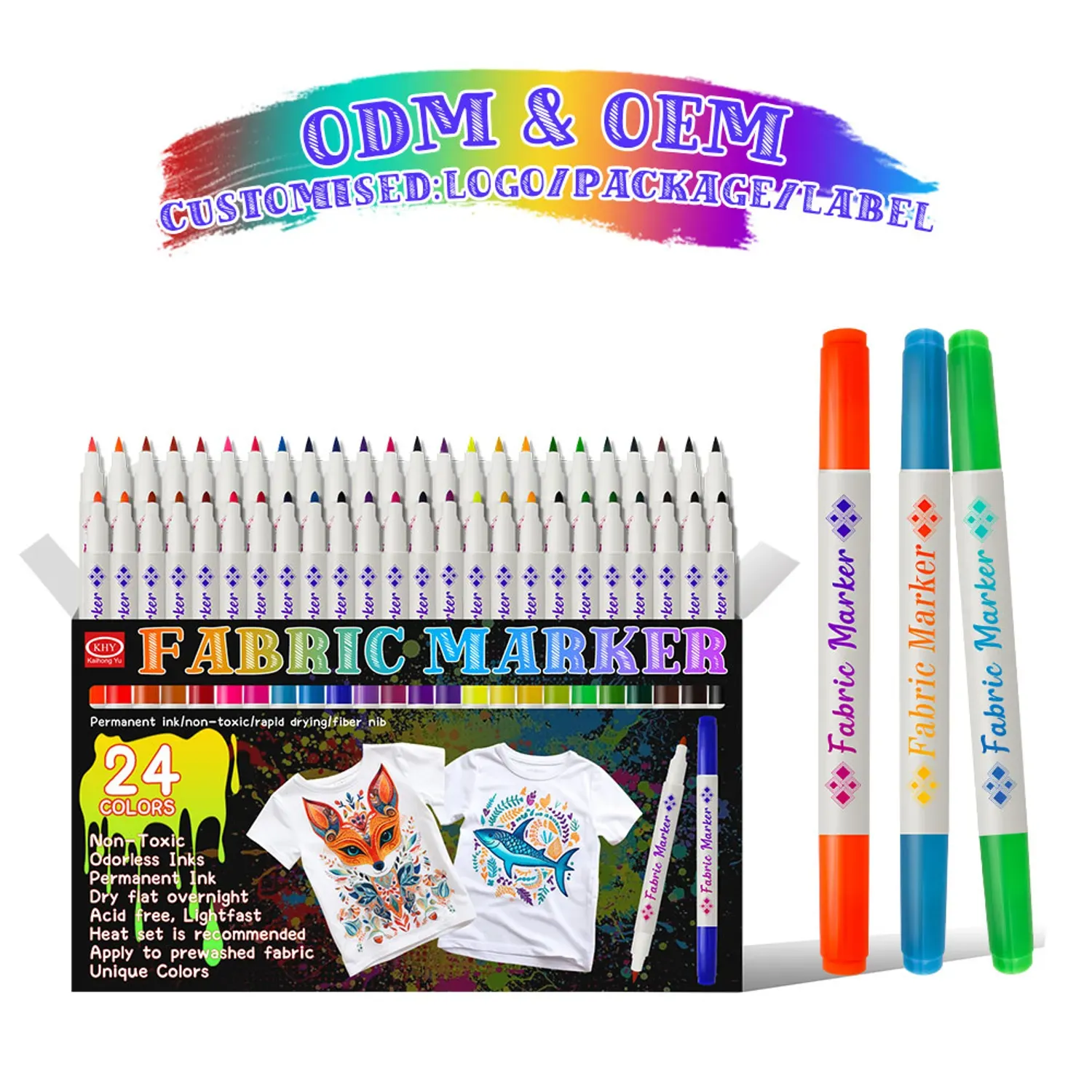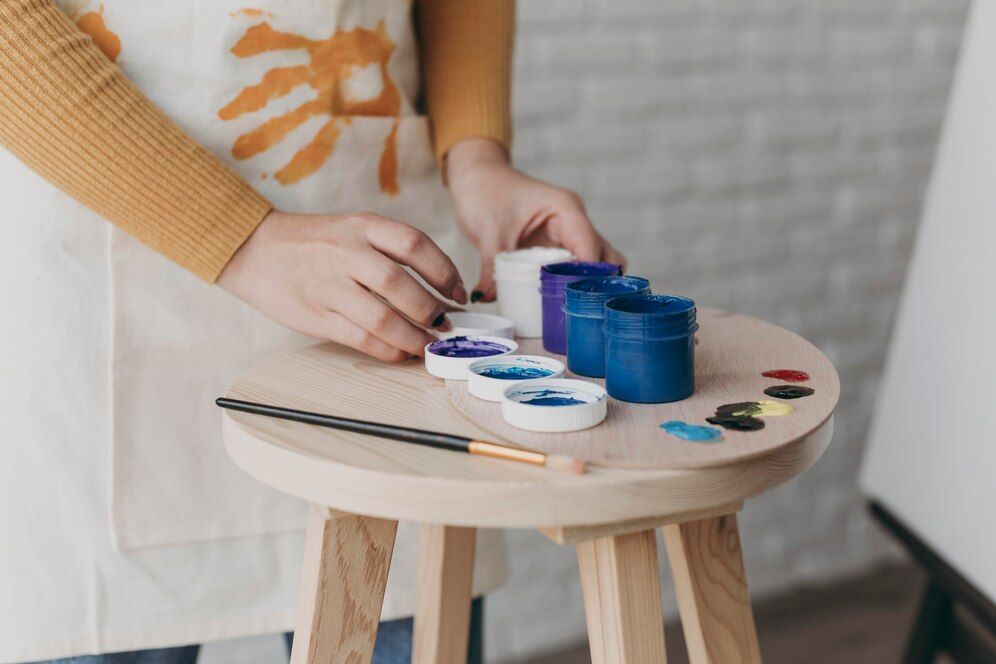betty@kaihong888.com

Get A Quote
Do You Have to Seal Fabric Paint?
Fabric painting is a fantastic way to add a personalized touch to your clothing, home decor, or any textile surface. But one question often arises among beginners and seasoned crafters alike: "Do you have to seal fabric paint?" This article delves deep into this topic, exploring the necessity and methods of sealing fabric paint to ensure your creative work stands the test of time.
Understanding Fabric Paint
What is Fabric Paint?
Fabric paint is specially formulated for use on textiles. Unlike regular paint, it is designed to adhere to fabric fibers without cracking or peeling off when dry. Fabric paints are available in a variety of types, including acrylic-based, which is most common, and dye-based, which is more permanent and vibrant.
How Does Fabric Paint Work?
Fabric paint works by soaking into the fabric and binding to the fibers. This is why it's essential to choose the right type of paint for your project. Acrylic fabric paint, for example, dries into a flexible plastic that moves with the fabric, making it perfect for wearable items.
Do You Have to Seal Fabric Paint?
The Importance of Sealing
One of the most frequent questions is, "Do you have to seal fabric paint?" The answer can vary depending on the type of paint and the intended use of the painted fabric. Sealing fabric paint can help protect your design from fading, cracking, and washing out, extending the life of your project.
When Sealing is Necessary
Sealing fabric paint is especially crucial if the item will be washed frequently, like clothing or pillowcases. It helps to lock in the paint, ensuring it stays vibrant and intact. Additionally, if you are using a fabric paint kit, check the instructions as some kits include a sealer or recommend one for the best results.
Types of Fabric Paint Sealers
Heat Setting
Heat setting is one of the most common methods to seal fabric paint. It involves applying heat to the painted fabric, which helps the paint adhere better and become more permanent. This can be done using an iron or a heat press.
Fabric Mediums
Fabric mediums are additives that can be mixed with acrylic paints to make them suitable for fabrics. These mediums not only improve the adhesion of the paint to the fabric but also increase its durability. Using a fabric medium can often eliminate the need for additional sealing.
Spray Sealers
Spray sealers are another option for sealing fabric paint. These are easy to apply and provide a uniform layer of protection over your design. They are particularly useful for larger projects or intricate designs where brushing on a sealer might be impractical.
How to Seal Fabric Paint
Heat Setting with an Iron
To heat set fabric paint using an iron, place a piece of parchment paper or a thin cloth over the painted area. Set your iron to a suitable temperature for the fabric (usually medium heat), and press it down firmly but gently for a few minutes. Ensure you move the iron around to avoid scorching any part of the fabric.
Using a Heat Press
A heat press can offer more consistent results compared to an iron. Set the heat press to the recommended temperature for your fabric paint (typically around 300-350°F) and press for about 15-20 seconds. This method is ideal for professional crafters or those working on large quantities.
Applying Fabric Medium
When using a fabric medium, mix it with your acrylic paint as per the instructions. After painting your design, allow it to dry completely. The fabric medium will help the paint bond to the fibers, often making additional sealing unnecessary. However, you can still heat set the design for added durability.
Spray Sealers Application
To apply a spray sealer, hold the can about 6-8 inches away from the fabric and spray an even coat over the painted area. Let it dry completely before using or washing the fabric. Spray sealers are convenient and effective, especially for detailed or textured surfaces.
Conclusion
In conclusion, whether or not you have to seal fabric paint largely depends on the specific requirements of your project. Sealing fabric paint can significantly enhance the durability and longevity of your painted designs, making it a worthwhile step for many projects. With various methods available, from heat setting to spray sealers, you can choose the best option that suits your needs and ensures your artistic creations remain vibrant and intact for years to come.
If you're looking for high-quality fabric paint and supplies to bring your creative visions to life, look no further than KHY. At KHY, we offer a wide range of DIY paint products, including fabric paint kits, designed to meet the needs of both beginners and professional artists. Our products are formulated for excellent adhesion, vibrant colors, and long-lasting results. Visit our website today to explore our extensive selection and find everything you need for your next fabric painting project. Choose KHY DIY for reliable, professional-grade paint products that help you achieve stunning, durable designs.
FAQs About Sealing Fabric Paint
Can You Wash Fabric Paint?
Yes, you can wash fabric paint, but it's essential to follow the manufacturer's instructions regarding care and washing. Generally, items with fabric paint should be turned inside out and washed in cold water on a gentle cycle. Avoid using harsh detergents or bleach.
How Long Does Fabric Paint Last?
The longevity of fabric paint depends on several factors, including the type of paint, the fabric, and how it's cared for. Properly sealed and cared-for fabric paint can last for many years, maintaining its color and integrity through numerous washes.
Is Sealing Fabric Paint Necessary for All Projects?
Not all projects require sealing. If your painted item will not be subjected to frequent washing or heavy use, you might skip the sealing step. However, for items like clothing or home decor that will see regular use, sealing is recommended to preserve your design.

